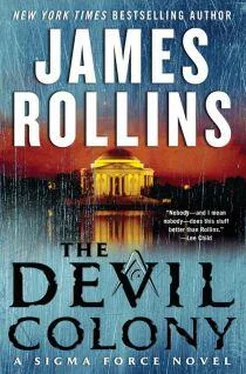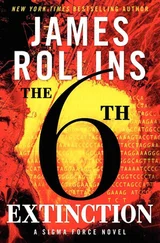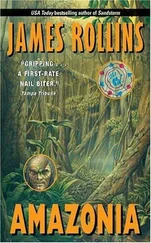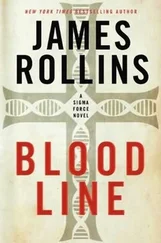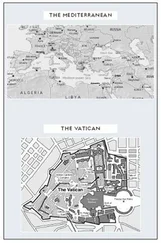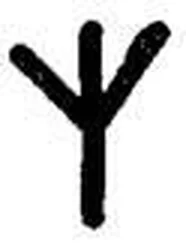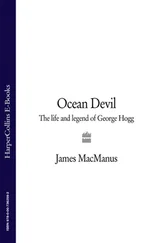James Rollins - THE DEVIL COLONY
Здесь есть возможность читать онлайн «James Rollins - THE DEVIL COLONY» весь текст электронной книги совершенно бесплатно (целиком полную версию без сокращений). В некоторых случаях можно слушать аудио, скачать через торрент в формате fb2 и присутствует краткое содержание. Жанр: Триллер, на английском языке. Описание произведения, (предисловие) а так же отзывы посетителей доступны на портале библиотеки ЛибКат.
- Название:THE DEVIL COLONY
- Автор:
- Жанр:
- Год:неизвестен
- ISBN:нет данных
- Рейтинг книги:5 / 5. Голосов: 1
-
Избранное:Добавить в избранное
- Отзывы:
-
Ваша оценка:
- 100
- 1
- 2
- 3
- 4
- 5
THE DEVIL COLONY: краткое содержание, описание и аннотация
Предлагаем к чтению аннотацию, описание, краткое содержание или предисловие (зависит от того, что написал сам автор книги «THE DEVIL COLONY»). Если вы не нашли необходимую информацию о книге — напишите в комментариях, мы постараемся отыскать её.
THE DEVIL COLONY — читать онлайн бесплатно полную книгу (весь текст) целиком
Ниже представлен текст книги, разбитый по страницам. Система сохранения места последней прочитанной страницы, позволяет с удобством читать онлайн бесплатно книгу «THE DEVIL COLONY», без необходимости каждый раз заново искать на чём Вы остановились. Поставьте закладку, и сможете в любой момент перейти на страницу, на которой закончили чтение.
Интервал:
Закладка:
Kowalski made a scoffing noise deep in his throat.
The professor shrugged. "I think there must have been a kernel of truth in those old stories. A proverbial warning against removing anything from that cave. I believe that something unstable was hidden there for centuries, and our attempt to transport it out caused it to explode."
"But what could it be?" Painter asked.
Across the table, Kai shifted in her seat. The answer to that question was plainly important to her, too.
"When Maggie and I first lifted the golden skull from its pedestal, I found it to be unusually cold, and I felt something shift inside it. I think Maggie felt it, too. I suspect something was hidden inside that totem, something valuable enough that it was sealed inside a fossilized skull."
A corner of Kowalski's lips curled in distaste. "Why pick a skull for that?"
The professor explained: "In many Indian gravesites, prehistoric fossils have been found buried with the dead and were clearly revered. In fact, it was an Indian who first showed the early colonists the location of rich fossil beds, where the remains of mastodons and other extinct beasts sparked the imagination of the scientists of that era. There were heated debates among the colonists, some even involving Thomas Jefferson, about whether such beasts still lived out west. So if these ancient Indians needed a vessel to secure something they considered sacred-and possibly dangerous-a prehistoric skull would not be an unexpected choice."
"Okay," Painter said. "Assuming you are correct, what might that be? What were they hiding?"
"I have no idea. At this point, it has yet to be determined if the mummified bodies found in the cavern are even Native Americans."
At Painter's side, the physics professor cleared his throat. "Hank, tell him about the carbon-14 dating of the remains."
Painter's gaze shifted from one professor to the other.
When Kanosh was slow to answer, Professor Denton spoke in a rush, impatient and excited. "The archaeology department dated the bodies to the early twelfth century. Well before any Europeans ever set foot in the New World."
Painter didn't understand the significance of this information or why Denton seemed so worked up about it. The dating simply lent credence to the fact that the bodies were Native American.
Denton reached to the table and slid the old dagger toward Painter. He remembered the physics professor gesturing with the same blade earlier.
"Take a closer look at this," Denton said.
Painter took the knife and flipped it over in his hands. The hilt was yellowed bone, but the blade looked to be steel, with a handsome, almost watery sheen across its surface.
"The dagger was recovered from the cave," Kanosh explained.
Painter looked up sharply.
"The local boy who escaped the chamber after the murder-suicide fled with this knife in hand. Afterward, we confiscated it from him, as it's illegal to remove relics from an Indian burial site. But the unusual nature of the blade required further investigation."
Painter understood. "Because Indians of that time didn't have the technology to make steel."
"That's right," Denton said, staring significantly at Kanosh. "Especially this type of steel."
"What do you mean?" Painter asked.
Denton returned his focus to the dagger. "This is a rare form of steel, identifiable alone by its unusual wavy surface pattern. It's known as Damascus steel. Such metal was forged only during the Middle Ages in a handful of foundries in the Middle East. Legendary swords made from this steel were prized above all others. It was said they held the sharpest edge and were all but unbreakable. Yet the exact method of their forging was kept secret and eventually lost sometime during the seventeenth century. All attempts to replicate it failed. Even today-while we can produce steel as hard, if not harder-we still can't make Damascus steel."
"Why's that?"
Denton pointed to the towering electron microscope humming in the neighboring alcove. "To make sure my initial assessment was correct, I examined the steel at the molecular level. I was able to verify the presence of cementite nanowires and carbon nanotubes within the metal. Both are unique characteristics of Damascus steel and give the material its high resilience and toughness. Universities around the world have been studying samples of this steel, trying to figure out how it was made."
Painter fought to make sense of this news. He was familiar with nanowires and nanotubes. Both were by-products of modern nanotechnology. Carbon nanotubes-artificially created cylinders of carbon atoms-demonstrated extraordinary strength and were already being incorporated in commercial products from crash helmets to body armor. Likewise, nanowires were long, single chains of atoms that showed unique electrical properties and promised coming breakthroughs in microelectronics and computer-chip development. Already the nanotech industry had grown into a multibillion-dollar industry and was continuing to expand at a blistering pace.
All of which raised a question in Painter's mind. He pointed to the strange dagger. "Are you suggesting these medieval sword makers were capable of manipulating matter at the atomic level, that they'd cracked the nanotech code way back in the Middle Ages?"
Denton nodded. "Possibly. Or at least, someone knew something. Other traces of ancient nanotechnology have been found. Take, for example, the stained-glass windows found in medieval churches. Some of the ruby-colored glass in those old churches can't be replicated today, and now we know why. Examination of the glass at the atomic level reveals the presence of gold nanospheres, whose creation still defies modern science. Other such examples have been discovered, too."
Painter struggled to put this all together in his head. He picked up the knife. "If you're right about all of this, how could this dagger be found here in America, buried among bodies dated to the twelfth century?"
He noted a shared glance between Denton and Kanosh. The Indian historian gave the smallest shake of his head toward the physicist. The man seemed anxious to say more, his face reddening with the effort to remain silent. Eventually he glanced away. Painter recalled the angry words he'd overheard as he entered the lab: This may be the very proof we've been looking for! Why are you so obstinate?
It seemed the two scientists had further speculations on the matter, but for the moment they were reluctant to share them with an outsider. Painter didn't press the subject. He had a more immediate question to broach first.
Turning, he faced Kai. "So tell me more about the men who were hunting you. The ones in the helicopter. Why do you think they were trying to kill you?"
Kai seemed to shrink into herself. She glanced to the professor, who gave her a kindly nod of reassurance. When she spoke, there remained an edge of defiance in her voice.
"I think it's because of what I stole," she said. "From the burial cave."
"Show him," Kanosh said.
From inside her jacket, she slipped out two gold tablets, each about eight inches square and a quarter inch thick. One of the pair appeared to be freshly polished; the other remained coated in a black tarnish. Painter noted some writing inscribed on the surface of the plates.
Kanosh explained. "There appeared to be hundreds of such tablets in the cave, secured in stone boxes and wrapped in juniper bark. Kai stole three of the plates as she made her escape."
"But there are only two here."
"That's right. She dropped one as she fled the cave, in full view of the cameras."
Painter let that sink in. "You think someone saw it. And they came looking to see if she had more gold."
"If it is gold," the physics professor added.
Читать дальшеИнтервал:
Закладка:
Похожие книги на «THE DEVIL COLONY»
Представляем Вашему вниманию похожие книги на «THE DEVIL COLONY» списком для выбора. Мы отобрали схожую по названию и смыслу литературу в надежде предоставить читателям больше вариантов отыскать новые, интересные, ещё непрочитанные произведения.
Обсуждение, отзывы о книге «THE DEVIL COLONY» и просто собственные мнения читателей. Оставьте ваши комментарии, напишите, что Вы думаете о произведении, его смысле или главных героях. Укажите что конкретно понравилось, а что нет, и почему Вы так считаете.
